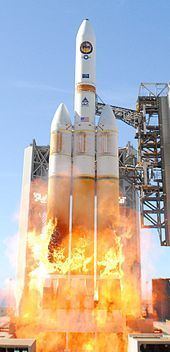Mission type Optical imaging COSPAR ID 2011-002A Spacecraft type KH-11 Inclination 97.92° Period 1.6 hours Launch date 20 January 2011 | Operator US NRO SATCAT no. 37348 Inclination 97.92° Apogee 986,000 m | |
 | ||
Similar USA‑225, USA‑245, PSSC‑2, Explorer‑1 [Prime], AubieSat‑1 | ||
USA-224, also known as NRO Launch 49 (NRO L-49), is an American reconnaissance satellite which was launched in 2011. It is a KH-11 optical imaging satellite, the fifteenth such spacecraft to be launched, and intended as a replacement of the USA-161 satellite launched in 2001.
Project history and cost
After the failure of the Boeing led Future Imagery Architecture program in 2005, NRO ordered two additional legacy hardware KH-11s. Critics of the decision voiced concerns that each "exquisite-class" satellite would cost more than the latest Nimitz class aircraft carrier (CVN-77) with its projected procurement cost of US$ 6.35 billion as of May 2005. USA-224 - the first of these two - was completed by Lockheed US $ 2 billion under the initial budget estimate, and two years ahead of schedule. USA-224 was launched atop a Delta IV Heavy rocket from Space Launch Complex 6 at the Vandenberg Air Force Base in California. The launch was conducted by United Launch Alliance, and was the first flight of a Delta IV Heavy from Vandenberg. Liftoff occurred on January 20, 2011 at 21:10:30 UTC. Upon reaching orbit, the satellite received the International Designator 2011-002A. The early launch of USA-224, and operational changes to extend the lifetime of its predecessor USA-161, reduced the coverage gap caused by the end of the primary mission of USA-161 to just 33 days.
Of the fifteenth KH-11 satellite to be launched, USA-224 is a member of one of the later block configurations occasionally identified as being a separate system. Details of its mission and orbit are classified, however amateur observers have identified it as being in a Low Earth orbit and tracked it. Shortly after launch it was in an orbit with a perigee of 251 kilometres (156 mi), an apogee of 1,023 kilometres (636 mi) and 97.9 degrees of inclination, typical for an operational KH-11 satellite. By April it was 260 by 987 kilometres (162 by 613 mi) at 97.93 degrees. As of 5 August 2014 it is in a 270 by 986 kilometres (168 by 613 mi) orbit with inclination of 97.92 degrees and an orbital period of 97.13 minutes
